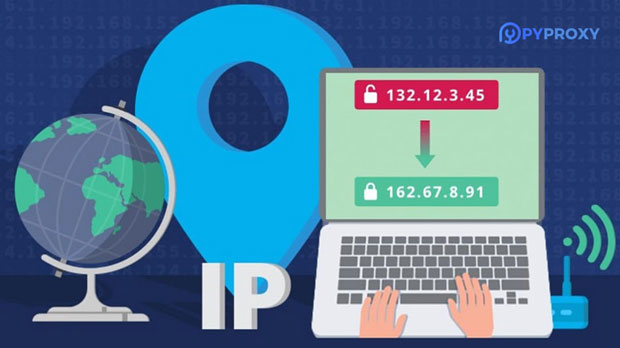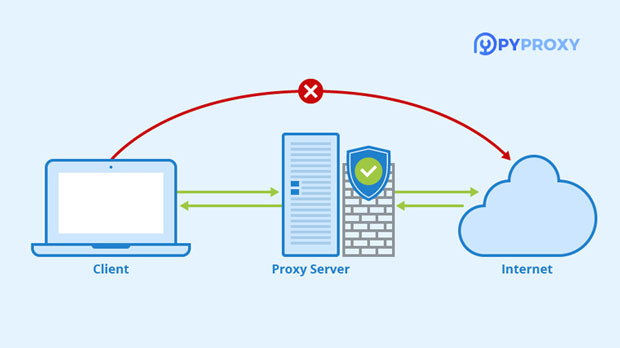When selecting a fast socks5 proxy service, users often face the challenge of balancing two primary factors: price and speed. On the one hand, you want to ensure that the service is fast enough to meet your needs, whether for secure browsing, gaming, or data scraping. On the other hand, price is an important consideration, especially for those looking for affordable options. In this article, we will explore how to make this balance, taking into account the different factors that influence both the price and speed of socks5 proxies. We will also discuss strategies for optimizing performance while keeping costs under control. Understanding SOCKS5 Proxy and Its ImportanceBefore diving into the price-speed balance, it’s important to understand what a SOCKS5 proxy is and why it’s significant. SOCKS5 is a protocol used for proxy servers that allows users to send internet traffic through a third-party server, thus masking their original IP address. It is often preferred for its versatility, offering support for a variety of traffic types such as HTTP, FTP, and torrents.Unlike some other proxy types, SOCKS5 does not alter the traffic data itself, meaning it doesn’t slow down communication. As a result, SOCKS5 proxies are widely used in applications where speed is critical, such as online gaming, video streaming, and web scraping.Price and Speed: Two Competing PrioritiesChoosing a SOCKS5 proxy service often comes down to finding the right compromise between price and speed. These two factors, though related, do not always align perfectly. Here’s why:1. Speed: High-speed proxies are crucial for ensuring a smooth online experience. A fast SOCKS5 proxy helps minimize latency, load times, and buffering, which is especially important in data-heavy applications like video streaming or gaming. However, achieving high-speed connections requires significant infrastructure and maintenance, which naturally increases the cost for the provider.2. Price: Proxies are priced based on their performance, geographical distribution of servers, and customer support. While many providers offer low-cost options, they often come with limitations in terms of speed, reliability, or security. In contrast, premium services with faster speeds usually come at a higher price due to better infrastructure, more advanced features, and enhanced customer support.Understanding this trade-off is crucial to selecting the best SOCKS5 proxy service for your specific needs.Factors Affecting SOCKS5 Proxy SpeedSeveral factors contribute to the speed of a SOCKS5 proxy, and these factors play a significant role in determining its price. Here’s a breakdown:1. Server Location: The closer the proxy server is to your location, the faster your internet connection will be. Proxies located in major data centers or near popular internet exchange points tend to offer lower latency and faster speeds.2. Bandwidth: Higher bandwidth generally leads to faster speeds. Proxy providers that invest in high-capacity servers with robust bandwidth offerings can handle large volumes of traffic without sacrificing speed. These types of services usually come at a premium price.3. Server Load: A proxy server’s speed can also be affected by the number of users connected to it. High traffic can lead to congestion and slower speeds. Premium services typically ensure lower server load through better management and limited user access, but this also contributes to the higher cost.4. Connection Protocols: SOCKS5 proxies allow for a more efficient connection than older protocols, but some providers may offer different configurations that affect speed. For example, providers that support advanced encryption standards or optimize the protocol for specific use cases (like streaming or gaming) may offer better performance but at a higher price.How Price Affects SOCKS5 Proxy QualityThe relationship between price and quality is usually direct when it comes to SOCKS5 proxies. Here’s a look at how cost influences the quality of the service:1. Low-Cost Proxies: These options are often provided by budget or shared proxy providers. While they may be affordable, they typically come with trade-offs in speed, reliability, and security. Low-cost services may have limited server options, slower speeds, and inadequate customer support. Additionally, these services often suffer from overselling, where many users are sharing the same proxy servers, which can degrade performance.2. Mid-Range Proxies: These proxies offer a balance between price and speed. Mid-range providers often have dedicated servers with reasonable performance. They may not offer the highest speeds or the best customer service, but they tend to provide better value for the price compared to low-cost providers. Mid-range services are ideal for users who want decent speed without paying top dollar.3. Premium Proxies: Premium SOCKS5 proxy services generally offer the fastest speeds, the highest level of security, and the best customer support. These services often have dedicated, high-capacity servers with minimal user load and high geographical coverage. However, the price for these services is higher due to the quality of infrastructure and the added features, such as customizable configurations, advanced encryption, and unlimited bandwidth.Finding the Right BalanceTo strike a balance between price and speed when choosing a SOCKS5 proxy, consider the following strategies:1. Assess Your Needs: Understand the purpose for which you need the SOCKS5 proxy. If you need it for activities like casual browsing or checking emails, you might not need top-tier speeds. However, if you plan to stream videos, play online games, or scrape data at scale, speed will be a crucial factor in your decision.2. Test Before Committing: Many SOCKS5 proxy providers offer trial periods or money-back guarantees. Take advantage of these to test the service before committing long-term. During the trial, pay attention to both the speed and the stability of the connection. This can help you assess whether the price is justified for the level of performance offered.3. Consider Long-Term Value: Instead of focusing solely on the upfront price, consider the long-term value that the service offers. A slightly higher monthly fee might give you better speed, reliability, and customer support, ultimately saving you time and frustration in the long run. Sometimes, opting for a more expensive service is a better investment if it enhances productivity and user experience.4. Read Reviews and Compare: While it’s essential not to rely entirely on reviews, they can provide valuable insights into the actual speed and quality of a service. Compare different providers to see which ones offer the best balance of price and performance based on user feedback.ConclusionBalancing price and speed when choosing a fast SOCKS5 proxy service is not always straightforward, but it is essential for finding the right service for your needs. Understanding the factors that influence speed and price, including server location, bandwidth, and the overall infrastructure of the service, is crucial to making an informed decision. Whether you’re a casual user or a business with more intensive needs, carefully assessing your requirements and testing services before committing can help you find the optimal balance of cost and performance. By doing so, you can ensure that you get the most value from your SOCKS5 proxy service without compromising on speed or reliability.
Jan 03, 2025
![arrow]()



















































